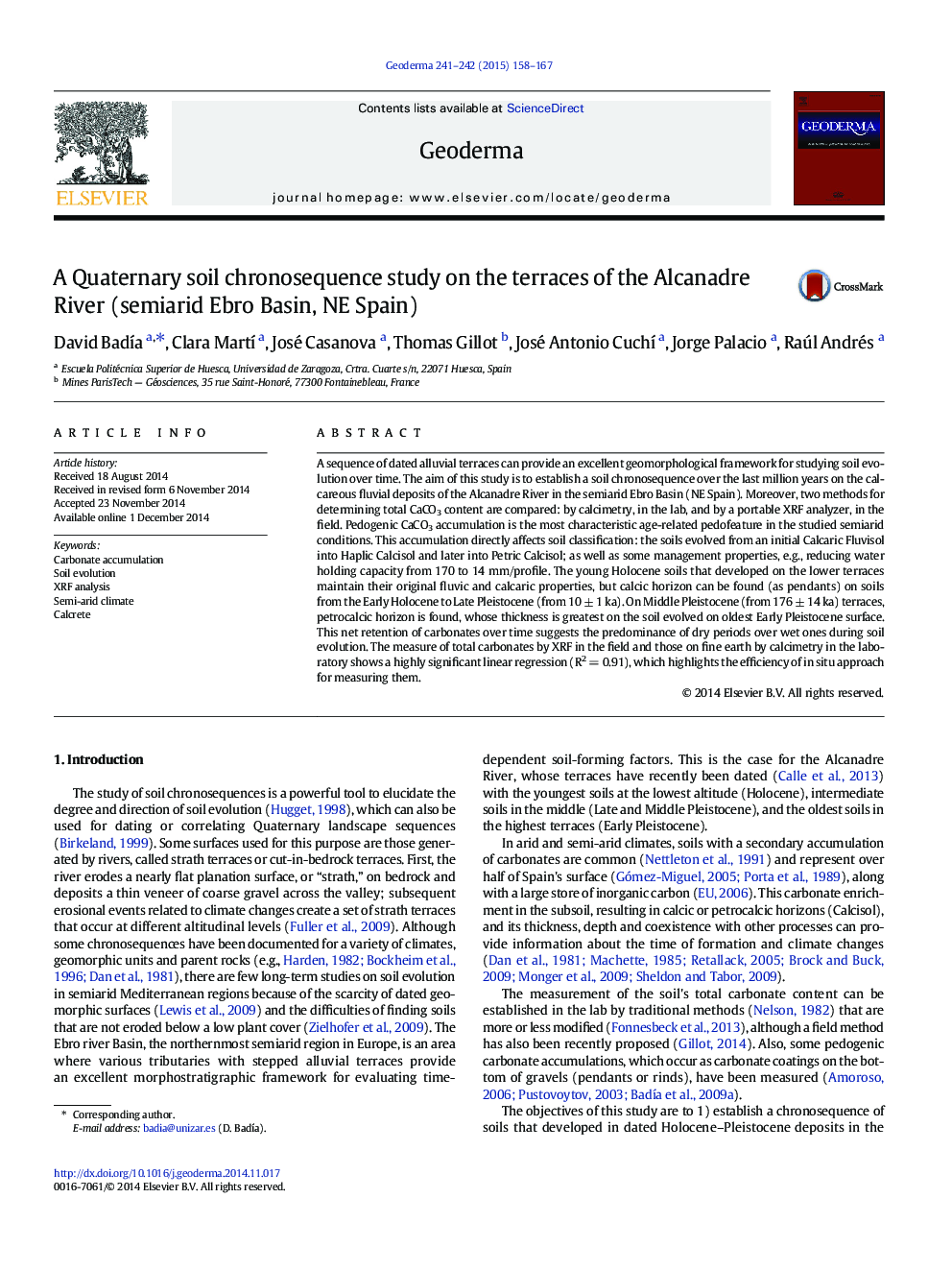| Article ID | Journal | Published Year | Pages | File Type |
|---|---|---|---|---|
| 6408599 | Geoderma | 2015 | 10 Pages |
â¢A sequence of dated alluvial terraces lets us to study soil evolution over Quaternary.â¢Carbonation is the most characteristic age-related pedofeature in semiarid conditions.â¢Soils evolve from Calcaric Fluvisol into Haplic Calcisol and later into Petric Calcisol.â¢The measure of carbonates by calcimetry and XRF is significantly related (r2 = 0.91).
A sequence of dated alluvial terraces can provide an excellent geomorphological framework for studying soil evolution over time. The aim of this study is to establish a soil chronosequence over the last million years on the calcareous fluvial deposits of the Alcanadre River in the semiarid Ebro Basin (NE Spain). Moreover, two methods for determining total CaCO3 content are compared: by calcimetry, in the lab, and by a portable XRF analyzer, in the field. Pedogenic CaCO3 accumulation is the most characteristic age-related pedofeature in the studied semiarid conditions. This accumulation directly affects soil classification: the soils evolved from an initial Calcaric Fluvisol into Haplic Calcisol and later into Petric Calcisol; as well as some management properties, e.g., reducing water holding capacity from 170 to 14 mm/profile. The young Holocene soils that developed on the lower terraces maintain their original fluvic and calcaric properties, but calcic horizon can be found (as pendants) on soils from the Early Holocene to Late Pleistocene (from 10 ± 1 ka). On Middle Pleistocene (from 176 ± 14 ka) terraces, petrocalcic horizon is found, whose thickness is greatest on the soil evolved on oldest Early Pleistocene surface. This net retention of carbonates over time suggests the predominance of dry periods over wet ones during soil evolution. The measure of total carbonates by XRF in the field and those on fine earth by calcimetry in the laboratory shows a highly significant linear regression (R2 = 0.91), which highlights the efficiency of in situ approach for measuring them.
Graphical abstractDownload full-size image
